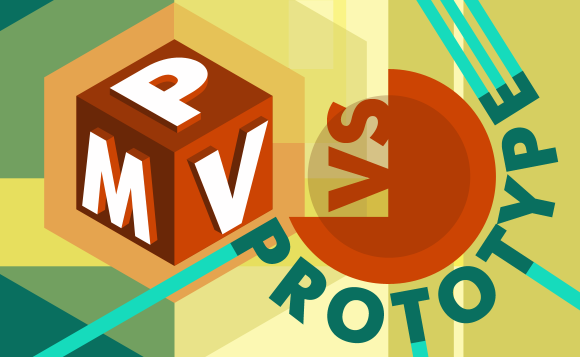
There are various approaches to software development which developers can choose. The method which is selected usually depends on specific crucial facts, including time available, complexity and purpose of the project to name a few. One of the most popular development methods seen today is the agile development method.
The agile development method is arranged in a cyclic method with various main processes, one of which is the design and development phase. The development of the system using requirement specifications previously enlisted constitutes this phase. There are two main development approaches which designers can use to implement the development phase: prototyping and the development of a Minimum Viable Product (MVP).
Both prototyping and MVP involve building a functional product which can interact with humans. However, there are some differences between these two development strategies which categorize them into two different development strategies. The most fundamental difference is that while prototypes are used to prove a particular concept which is being tested, MVPs are developed to analyze performance. There are other differences, too as discussed below.
Purpose
Prototyping and MVP products are developed to satisfy different development requirements. For prototyping, the development group usually aims at testing the feasibility and validating the concept which it is built around. The very basis of a project is to prove that the product will be of actual importance to the public and will be a solution to an existing need. Prototyping is an efficient way to do that. MVPs are usually built after prototyping; and, their purpose is to test how the system operates with the actual target audience, that is the consumers.
Target Audience
Prototyping is a development method that is confined to the development room. It is developed to target major stakeholders of the project such as developers, company executives, and investors. Prototypes are designed to prove that the various investments made into the product are worth it and that there will be returns. With MVP products, the target audience is the users of the finished product. They are the best way to target functionality and concepts such as user-friendliness, as well as bug identification. This audience is usually limited, however, to a sizable group of individuals so that reviews are easier to attain and analyze.
Composition
The composition of prototypes and MVPs may vary from time to time. Prototyping may not necessarily involve a fully functional product. It may be a mock-up of the finished products, providing only the main functions of the finished product. Sometimes, the prototype may be made up of a video presentation or PowerPoint slides elaborating the functioning of the product, such as the flow of data and different administrative levels and tasks. MVPs are usually a first-level production of the finished project. They contain complete functionality and properties, with integrated user interfaces and back-end modules which interact effectively to produce the desired result.
Legacy
When it comes to prototypes, there is no tangible legacy to be left by it. They are primarily testing products whose use does not precede that of feasibility testing within development grounds. Ideas can either be rejected or approved based on their prototypes. Once the decision is made, prototypes are no longer of much importance to the development cycle and can be done away with. MVPs are considered the first version of a product. They are deployed to real consumers and are subject to review and long lasting criticism from its users. Later versions of the product are expected to be improvements of the MVP product. In some occasions, the prototypes, if functional enough, are taken as the basis for the MVP and can be built into the finished product. However, the MVP is what will be deployed to the public.
Feedback
For prototypes, feedback is usually centered on the concepts surrounding the proposed solution. The feedback given is usually from within the developer’s group and is fundamental for the cessation or proceeding of the project. Feedback from MVPs is usually aimed at improving an already existing and functional product, making minor adjustments or adding features without changing the core functionality of the product.
Testing
Prototypes are concepts. The testing which they are subject to is that of evaluating concepts to see where they fit in the market space and how useful they will be in solving the target problem. MVP’s testing is based on how effective the final product is in solving the problem described during developing. It is centered on efficiency rather than whether there is a problem to be solved.
Revenue
Prototypes are in-house products, and as such, they are not revenue-generating productions. Their purpose is strictly to validate development and distribution of the finished product which is to be sold. MVPs, however, are considered finished products. Companies can decide to place them on sale if they consider the finished product good enough for sale. Usually, companies give free access to the product for a limited amount (say, a month) which helps them to determine the value of the product and place a payment strategy, such as subscriptions or one-time purchase.
Development Timing
For prototypes, development is usually when the business case is not unproven and somewhat vague. There is no clear picture of the feasibility, development needs and financial risks involved. MVPs are developed when there is a clear direction which the product will follow, precise expected results and calculated risks. The funding for MVPs is also clearly drawn out before development begins as opposed to prototypes. The development process is longer than the prototyping as it includes vigorous testing and validation of different functionalities.


